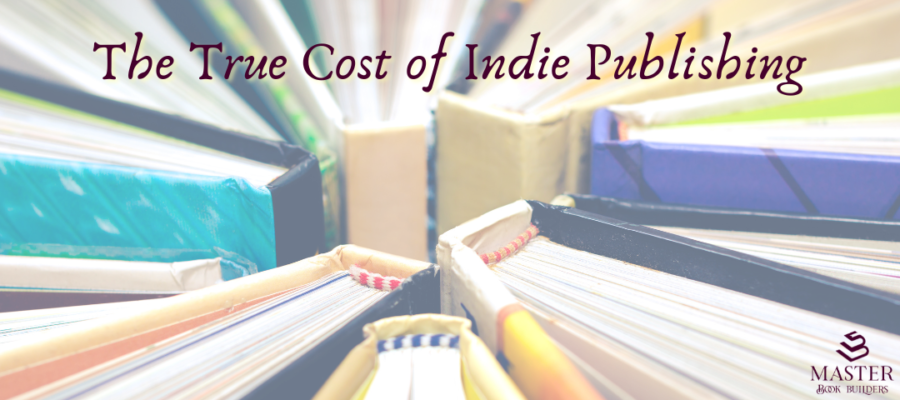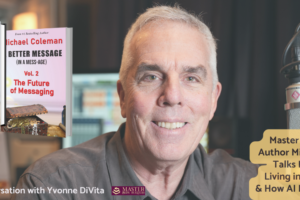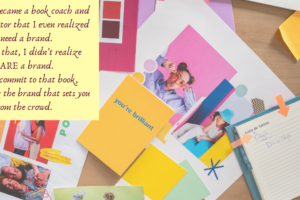The TRUE Cost of Indie Publishing
People are dying to understand Indie Publishing.
Well, maybe not dying. I hope no one has died. What I mean to say is that people are eager to understand the cost of becoming an Indie Published author. And by cost I mean this: you can Indie Publish by working with the right people or by working with the wrong people.
One way achieves your goals. The other may set you back.
People are confused about what ‘Indie Publishing‘ means. And, often misinformed. Struggling to get the right answers. Sometimes, they talk to the wrong people. Sometimes they’re swayed to spend more than they need to. Or, they spend less and get what they paid for, as the saying goes.
I know this because I talk to a good many of these people. It’s my pleasure to answer their questions, and I don’t mince words – people need to hear the truth – NO your book will probably not become an NYT bestseller if you Indie Publish. But is that why you’re writing the book? I hope not.
I’m honest. I admit when I don’t know something (then I go out and learn about it). I keep their needs in mind throughout the conversation. My goal is always to give them the facts, all the facts, so they can make an informed decision about how to proceed.
Let’s talk about understanding what goes into becoming an Indie Published author. What it means to be your own publisher. To be both author and publisher.
Editing Your Book
First, you should not publish your book without proper editing. That means copy editing and developmental editing. The first one, copy editing, is necessary to create a polished book. Copy editors keep you honest. These are the people who make sure your writing is up to the standards set by publishers everywhere. These are the people who catch the little errors and fix them.
A developmental editor does all that and more. A dev editor, as we are sometimes called, will work with you on word placement. Paragraph placement. Plot. Chapter titles and placement. Flow of the message or story. She will make you think harder about why you’re writing the book and who it is for. Her goal is to make sure the story – message – intent (promise, as my friend Porsché Mysticque Steele says) is working for the reader. Because in the end, without the reader, the book is a failure.
Cost of copy editing and developmental editing varies. Copy editors often charge by the word. Still others look at the page count and charge by that. Google can connect you with thousands of editors. Be sure to talk to several and look at some of the books they’ve worked on.
When you find a developmental editor, make sure they are experienced in your genre or book topic. You don’t want to work with a romance editor if your book is about building a business in your basement. Talk to these people. Ask for references. Some charge by the hour. Others by the project. The pricing will depend on your book and your dev editor’s time and experience. An experienced editor might work faster. But she might charge more – and it will be worth it.
Design
I see too many people lose out on recognition for their book (in awards opportunities and on Amazon as a book that won’t stand out) because their cover is not designed by a true book cover designer.
You want your book cover to say, “Hey LOOK AT ME! I’M JUST WHAT YOU’RE LOOKING FOR!”
Don’t depend on your own eyes. Don’t think you ‘know’ what the cover should look like. Engage a book cover designer who can guide you to the exact design you need. Yes, it might be very similar to what you envisioned. But it might be radically different, also.
The cover needs to pop. It needs to speak to the possible reader. It needs to show them, by the title, subtitle, and design that this is what they’ve been looking for forever.
Understand that people buy books online more than in bookstores, these days. Your book must entice me regardless of how big the image of the cover is. That little thumbnail image has to represent the book, and you, as well as the full-sized image shown on your Amazon page. Or elsewhere.
And, let’s talk about the spine and back cover. Too many people ignore that. Both some authors and their sister’s best friend’s husband who designed the pretty cover for them. It’s as if the spine is invisible. It’s not. On a shelf next to other people’s books, it has a job to do, also.
The spine must include the title of the book. And the subtitle, if possible. Also, the author’s name. And then, the publisher’s imprint. In Indie Publishing, since you are the publisher, you will have to create an imprint of some sort. It can be the brand logo of your business, if the book is being used in the business (and we hope it is).
What about the back cover? Just a blurb about the book and the author’s picture with a little bio, right? Not right. You should have several testimonials there, also. Testimonials you get from your BETA readers. Want to know more about BETA readers? Go watch my video on LinkedIn.
The cost of cover design varies but what I want you to know is that this is your book’s first impression. Look at covers you like. Look at the designer’s portfolio. Some Indie Publishers include this. Understand, however, that you do have a say. That’s why it’s Indie Publishing, after all.

Interior Design
This gets it own section because it’s all about how the book looks and reads, on the inside.
The interior design chosen for a particular book isn’t just there to be pleasant to the eye. It’s there to help lead the reader along as she reads.
Interior page design includes font choice such as main text, chapter headings, subheadings; also running headers (more info on running headers here), left-justification aka ragged right (which we recommend – talk to Tom about that, here’s his post called Still No Justification all about it); page layout, drop caps or not, call out boxes, quotations, and so much more.
The goal is to present a pleasing flow of text and images, if there are any – understand that you don’t have to use color inside, high definition black and white images often suffice – and to give the reader a positive experience reading the book. Don’t scrimp on this. Do it for the reader.
I also want to mention accessibility. Your design should take into account people with disabilities. People who have trouble reading. Or people with ADHD. You can’t design a book’s cover or interior to only appeal to those with disabilities, but you can pay attention to the issue of inclusive design and be thoughtful in your choices.
Inclusive design is a design process in which a product, service, or environment is designed to be usable for as many people as possible, particularly groups who are traditionally excluded from being able to use an interface or navigate an environment. Its focus is on fulfilling as many user needs as possible, not just as many users as possible. Historically, inclusive design has been linked to designing for people with physical disabilities, and accessibility is one of the key outcomes of inclusive design.
(footnotes omitted) https://en.wikipedia.org/wiki/Inclusive_design
Things People Forget
Not everyone forgets these, but when you’re planning your book project, include the cost of your ISBN. That stands for International Standard Book Number. It’s a necessary part of your investment. We recommend buying a block of 10 because you’ll need one for print, one for e-book, one for audiobook, and one for hardcover, if you choose to create one. In the US the official agency for the ISBN is Bowker.
If you’re doing print you’ll need a barcode with the ISBN embedded to print on the back cover. Bowker will try to sell you the barcode but you can get it cheaper at CreateBarcodes.com.
You will also want to file for copyright. Yes, your work is copyrighted as soon as you write the first word. But you want to have your book registered and on file with the copyright office. We walk our authors through this as it can be a bit confusing. NOTE: It’s important to get your registration filed within 3 months of your publication date.
Copyright is a form of protection provided by the laws of the United States to the authors of ‘original works of authorship’ that are fixed in a tangible form of expression.
https://www.copyright.gov/circs/circ01.pdf
This is not to be confused with trademarking. You cannot trademark your book.
A trademark:
- Identifies the source of your goods or services.
- Provides legal protection for your brand.
- Helps you guard against counterfeiting and fraud.
A common misconception is that having a trademark means you legally own a particular word or phrase and can prevent others from using it. However, you don’t have rights to the word or phrase in general, only to how that word or phrase is used with your specific goods or services.
https://www.uspto.gov/trademarks/basics/what-trademark
Your website or webpage. If you have a website, you should plan on dedicating a page to your book. If you do not have a website, you will need to have one.
Author copies of your book. While you will be able to purchase author copies at a substantial discount, and we recommend having at least 10 around at any given time (to give away, yes, or sell in the back of the room where you’re speaking).
Expenses for travel. You may be asked to speak while you’re writing the book and certainly after it’s released, and some engagements will be paid engagements while other will not be so. Travel may or may not be included in the engagement. Plan accordingly.
Merchandise and swag. Yes, you may decide to create merchandise from your book. T-shirts. Mugs. Travel bags. Bookmarks. If your message has a catchy or inspirational focus, this could be a great marketing plan.
And, marketing. You need to market your book. Yes, YOU need to market your book. You may engage a book marketer or a PR firm but you will also need to take time and energy to be your own cheerleader.
Part of your marketing plan may be to engage paid book reviews. Now, now, don’t start throwing things at me. Today, there are many professional groups who have serious readers in their database who offer paid book reviews. Yes, even on Amazon. The readers are honest and professional. They are paid for their time and their opinion. The same as the guy who writes reviews for the NYT or any other publication. He’s paid to do what he does because he knows how to be unbiased and honest. Don’t let anyone tell you this is not legitimate. It is. We have a list of places to get honest, respectful, paid book reviews.
Also, consider the cost of attending webinars and workshops or conferences on how to be a successful author. These are places you will learn how to be a better writer. How to produce a better book. How to sell and market your book. Education is always money well-spent. The good news here is there are a number of free events to attend (where they upsell you to a paid subscription – I have several, and they are extremely useful).
Because we always save the best for last, right? Here’s one of the most important people you want on your team. A book coach. This is someone who may also be a developmental editor, as I am, or do the coaching separately. A book coach keeps you honest, accountable, and helps you organize your stories.
A book coach is there to support you throughout the writing, through writer’s block or worries about why you decided to do this in the first place. I do all of that as a coach and developmental editor.
Whew! I think I’m Done
I could make a detailed list of every little thing you need to think about to become Indie Published, like office supplies, and content experts if your book needs them, and copywriters to write the copy for your Amazon blurb (we do that inhouse at Master Book Builders) and/or for your website/webpage.
The purpose here isn’t to say, here are the two dozen things you need to include in your book plan, because that could be both frightening… OMG! I have to do all that!?!… and worrisome as dollar signs float around your head.
The purpose, instead, is to educate you on the important parts of your writing and publishing journey should you decide to become an Indie Published author. Which we recommend. Why? Tom wrote a post about that, too: Weighing the Investment in Your Book. It’s a recommended read.
In the end, the most important thing you’ll learn in the post linked just above, is this:
In our work with authors, we create a custom “book building” package that leverages Yvonne’s skills in book coaching and developmental editing, business and marketing advice, and her network of publishing industry contacts, combined with Tom’s book design, cover design, and web design experience and his legal background. We don’t offer every skill you will need, but we have many – and have a resource list of experts to connect you with for the tasks we don’t do.
Any questions? I’m always around to answer your questions. You can book a call with me, the first 20 minutes are on me, and we can discuss your work. Or, if you have a manuscript and want to know if it’s ready for the big time, we do manuscript assessments.
I look forward to hearing from you.






Leave a Reply